Greco-Roman Museum
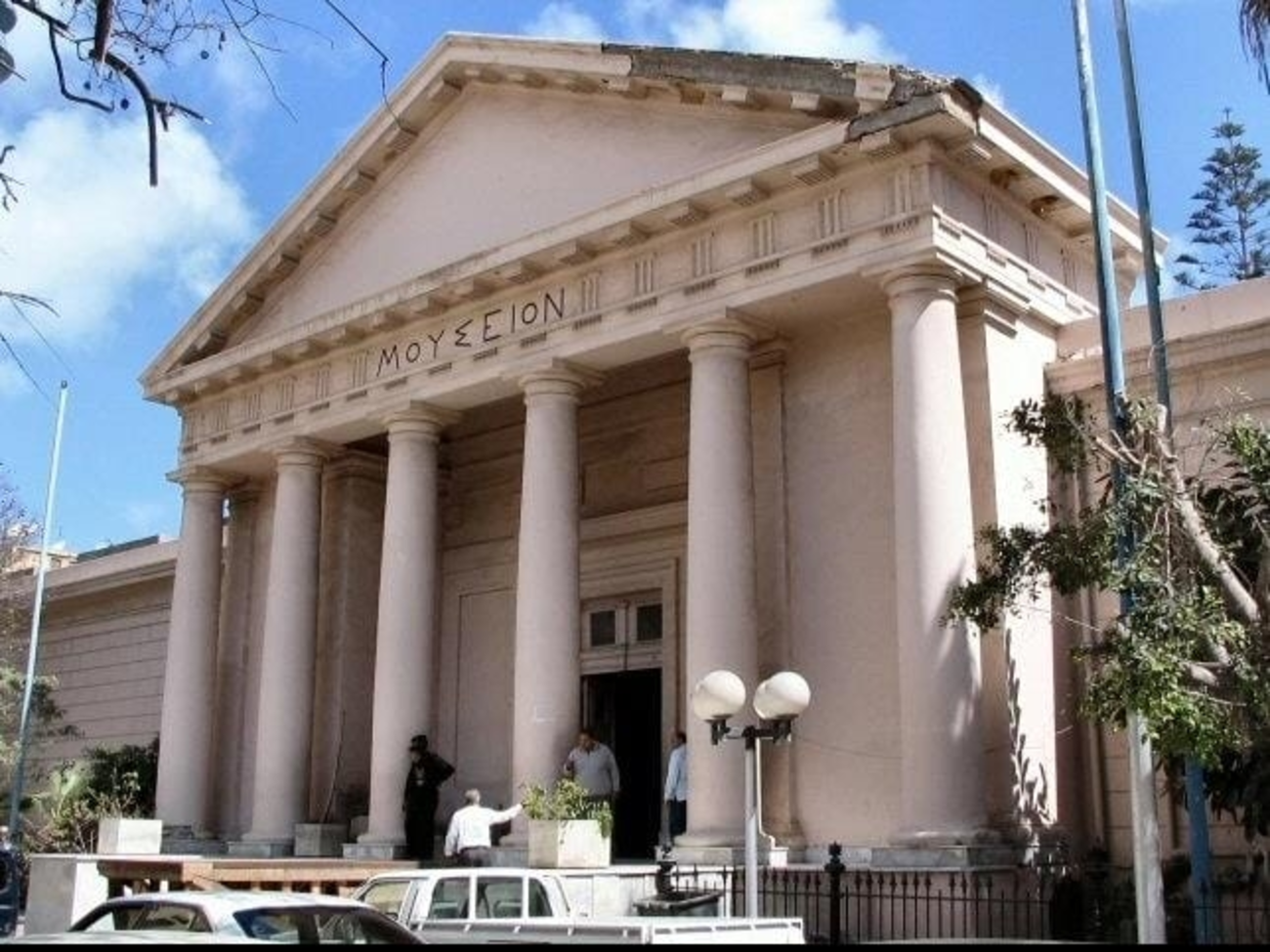
the Greco-Roman Museum in Alexandria reopened in October 2023 after an 18-year renovation, with Egyptian Prime Minister Mostafa Madbouly attending the ceremony. Originally opened on October 17, 1892, the museum is now 131 years old and houses over 40,000 artifacts spanning from 630 BC to the 19th-century Ottoman period. The collection includes sculptures, mosaics, woodwork, and coins, reflecting Alexandria's blend of Greek and Egyptian cultures. Notable exhibits include the alabaster Good Shepherd in Room 1 and the Apis Bull in Room 6. Starting January 2025, ticket payments will be accepted by credit card only.
The Origins of the Greco-Roman Museum
The Greco-Roman Museum has a rich heritage that dates back to the late 19th century. This cultural landmark became a vital part of Alexandria's efforts to preserve its heritage. The museum started from humble beginnings and grew into one of Egypt's most treasured archeological collections.
From Rosetta Street to Horriya Avenue
The Greco-Roman Museum Alexandria began its journey in 1892 in a simple five-room apartment on Rosetta Street (now Horriya Avenue). The growing collection soon needed more space. The museum moved to a larger building near today's Gamal Abdul Nasser Street in 1895. This move meant more than just finding a new home - it showed the museum's growing importance in Egypt's cultural world. This new building earned its place in history as Egypt's first structure built specifically to preserve and showcase antiquities.
The vision of Giuseppe Botti
An Italian scholar's remarkable vision brought this cultural landmark to life. Giuseppe Botti, who was born in Modena, Italy in 1853, earned his specialization in ancient Egyptian civilization from the University of Bologna. He taught at several Italian schools before moving to Alexandria in 1889. His love for archeology and preservation sparked an idea that would change everything.
Botti came up with the idea to create a dedicated space for Alexandria's archeological discoveries in 1891. He wanted to protect the city's antiquities from being lost or destroyed. Many artifacts were being sent to the Boulaq Museum in Cairo instead of staying in Alexandria where they were found. His steadfast dedication paid off when he became the first director of the Greco-Roman Museum at its opening in 1892.
Inauguration by Khedive Abbas II
The museum took a big step forward when Nubar Pasha started the construction of a new neoclassical building. Architects Dietrich and Stenon designed this impressive structure. The builders completed the entire project in just one year - quite an achievement for that time.
Khedive Abbas Helmy II officially opened the Greco-Roman Museum on September 26, 1895. This grand opening brought Botti's dream to life and showed Egypt's commitment to protecting its diverse cultural heritage. The museum quickly became the main home for artifacts found at archeological sites throughout Alexandria. These treasures help light up the city's fascinating past.
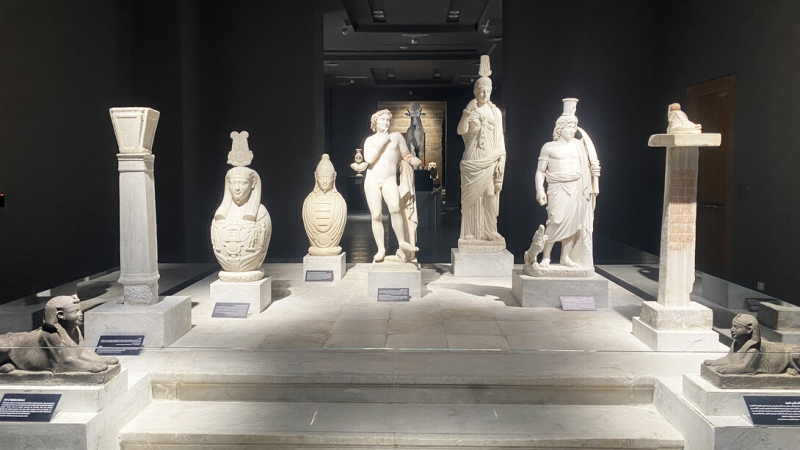
Architectural and Historical Significance
The Greco-Roman Museum amazes visitors with both its remarkable collection and architectural beauty. This magnificent building stands as proof of Alexandria's rich heritage. Its design perfectly blends esthetic appeal with historical significance.
Neoclassical design and symbolism
Six stately columns support an impressive pediment on the museum's magnificent neoclassical facade. German architect Dietrich and Dutch architect Stenon created this architectural masterpiece in 1894, which showcases the classical Greek building style. After Nubar Pasha set the life-blood, construction moved quickly. The building team completed their work in just one year.
The building has seen several updates to preserve its historical value while adapting to modern needs. The largest renovation started in 2005. Work paused briefly in 2011 due to funding issues but picked up again in 2018. This detailed restoration strengthened old walls with iron structures, refreshed interior and exterior paint, and brought the classic facade back to life. The team also added modern lighting and security systems to protect precious artifacts and improve the visitor experience.
The meaning behind 'MOUSEION'
The ancient Greek inscription "MOYΣEION" (MOUSEION) proudly adorns the building's facade. This word literally means "place of the Muses". Our modern word "museum" comes directly from this Greek term.
Ancient Hellenistic society saw a mouseion as much more than a building. It represented a center for scholarly work and intellectual discussion. The original Mouseion of Alexandria was part of a larger complex that included the famous Library of Alexandria. This complex served as a hub for knowledge and creativity. The facade's inscription creates a direct link between this modern institution and Alexandria's legacy as an ancient center of learning and culture.
Expansion to 27 halls and garden
The Greco-Roman Museum has grown significantly from its humble beginnings. Starting with 11 halls, the museum expanded steadily over decades. Development work in 1984 increased the space to 27 halls and added an attractive garden.
Ground-floor exhibition spaces now display archeological pieces in chronological order. These artifacts span from the 5th century BC through the Byzantine era (6th century AD). The mezzanine level has four specialized halls dedicated to education, archives, gypsoteca (plaster cast collections), and study. The museum's 6,000 artifacts tell the story of intellectual and artistic connections between ancient Egyptian, Greek, Roman, Coptic, and Byzantine civilizations.
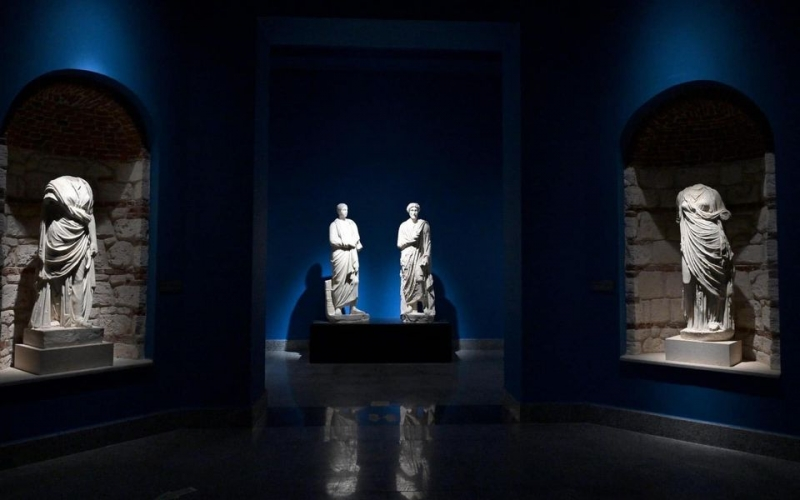
Inside the Museum: Room-by-Room Highlights
A walk through the Greco-Roman Museum Alexandria reveals a wealth of antiquities that tell Egypt's multicultural story. Each room holds unique collections that highlight how these great civilizations merged.
Room 1: The Good Shepherd and Coptic influences
The experience starts with a stunning alabaster Good Shepherd statue. Its large eyes and flat, regular robe folds show the distinct Coptic artistic style. This beautiful piece captures early Christian symbolism, with the shepherd representing protection and deliverance rather than sacrifice. The hall also houses fascinating artifacts from the Monastery of St. Menas, west of Alexandria.
Room 3: Jewelry and silver torso of Aphrodite
Room 3 holds an impressive collection of metal, silver, and gold artifacts. The silver torso of Aphrodite from the 2nd century stands as its crown jewel. Visitors can marvel at ancient jewelry in magnificent colors, which shows the exceptional skill of Greco-Roman craftsmen.
Room 6: Apis Bull and Serapis Head
The impressive Apis Bull dominates Room 6. Workers found it west of Pompey's Pillar during Emperor Hadrian's reign (117-138 AD). This remarkable statue blends Greek realism with traditional Egyptian art perfectly. The Serapis Head, carved from fine white marble and found near Pompey's Pillar, stands nearby. This deity combined Osiris and Apis to connect Egyptian and Greek religious traditions.
Room 8: Mummies and Ptolemaic sarcophagi
The eighth hall focuses on mummies and sarcophagi. The displays show clear differences between pharaonic mummies' gilded and painted cartonnage and Ptolemaic examples' ornate diamond bandaging. These artifacts show how burial practices changed through different dynasties.
Room 12: Marcus Aurelius and Medusa mosaic
Room 12 displays Graeco-Roman statuary, including Ptolemy IV's colossal red granite head from Abuqir, wearing Egypt's double crown. The room's star attraction is Marcus Aurelius's huge white marble statue (121-180 AD), which came from beneath the Sayed Darwish Theater. The famous Medusa mosaic, once a floor showing Medusa's full body, deserves special attention.
Room 22: Colored glassware and bronze head of Hadrian
The final featured room shows beautiful colored glassware that proves ancient Egypt's glass-making skill through soda and sand fusion. A striking bronze head of Emperor Hadrian (76-138 AD) stands at the hall's end. Its eyes, made from ivory and glass, show ancient artisans' incredible attention to detail.
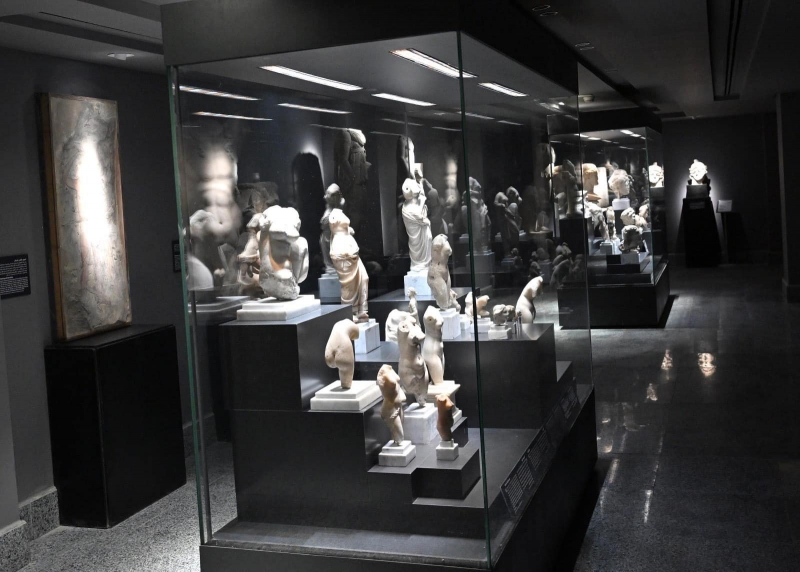
Customize Your Dream Vacation!
Get in touch with our local experts for an unforgettable journey.
Plan Your Trip
The Museum’s Role in Preserving Cultural Fusion
The Greco-Roman Museum stands out as Alexandria's premier showcase of Mediterranean cultural fusion. This remarkable place holds tangible proof of how different civilizations came together to create unique art forms.
Greek realism meets Egyptian symbolism
The museum's rich collection shows the artistic conversation between Greek esthetic principles and traditional Egyptian imagery. The sculptures reveal this amazing blend - Greek anatomical detail flows into Egyptian symbolic elements. Visitors can see how classic Greek proportions gradually embraced Egyptian symbolic motifs. This shows up clearly in statues that combine realistic Greek torsos with traditional Egyptian headdresses and poses.
Artifacts from Fayoum and Benhasa
Discoveries from Fayoum and Benhasa tell us a lot about Egypt's multicultural history. These sites revealed amazing examples of cultural mixing. The famous Fayoum mummy portraits blend Egyptian mummification with Roman-style realistic portraiture. The Benhasa artifacts showcase state-of-the-art technical advances from cultural exchange. Egyptian materials and Greek design sensibilities came together beautifully in metalwork and ceramics.
The Agathadaimon Stelae and divine serpents
The Agathadaimon Stelae represent the sort of thing I love about cultural fusion. These carvings show the "good spirit" serpent deity that protected homes and communities. Greek settlers adopted this Egyptian protective figure and changed its artistic style. They mixed Greek sculpture techniques with Egyptian religious symbols. These serpent images show how religious ideas crossed cultural lines.
Hellenistic statuary and Roman portraiture
The museum features amazing examples of Hellenistic sculpture and Roman portrait styles. Hellenistic works focused on ideal beauty and dramatic movement. Roman portraits captured individual character and realistic features. Alexandria's unique environment blended these styles with Egyptian artistic traditions. This created distinctive artwork that borrowed from all three cultures yet remained uniquely Alexandrian.
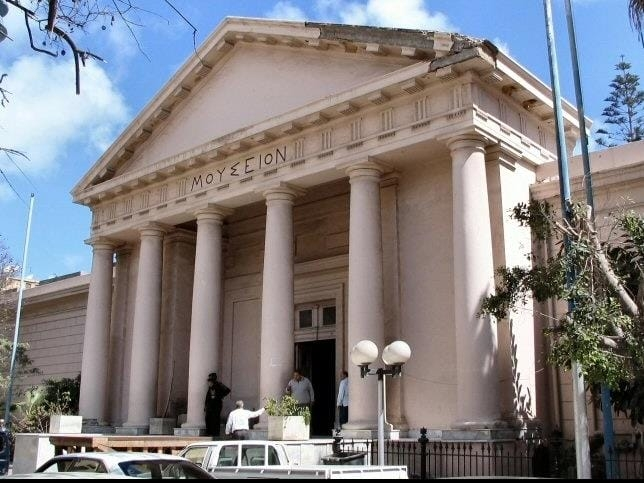
The museum reopened in October 2023 after an 18-year renovation that began in 2005.
"Mouseion" means “place of the Muses” in Greek. It links today’s museum to ancient Alexandria’s role as a world center of learning.
The museum houses over 40,000 archeological treasures, with about 6,000 artifacts on display across its 27 exhibition halls.
One of the most notable artifacts is the Apis Bull statue in Room 6, discovered near Pompey's Pillar. It represents a successful integration of Greek realism with traditional Egyptian imagery.
The museum showcases cultural fusion through its diverse collection of artifacts that demonstrate the blending of Greek, Roman, Egyptian, Coptic, and Byzantine influences in art, sculpture, and religious symbolism.
























